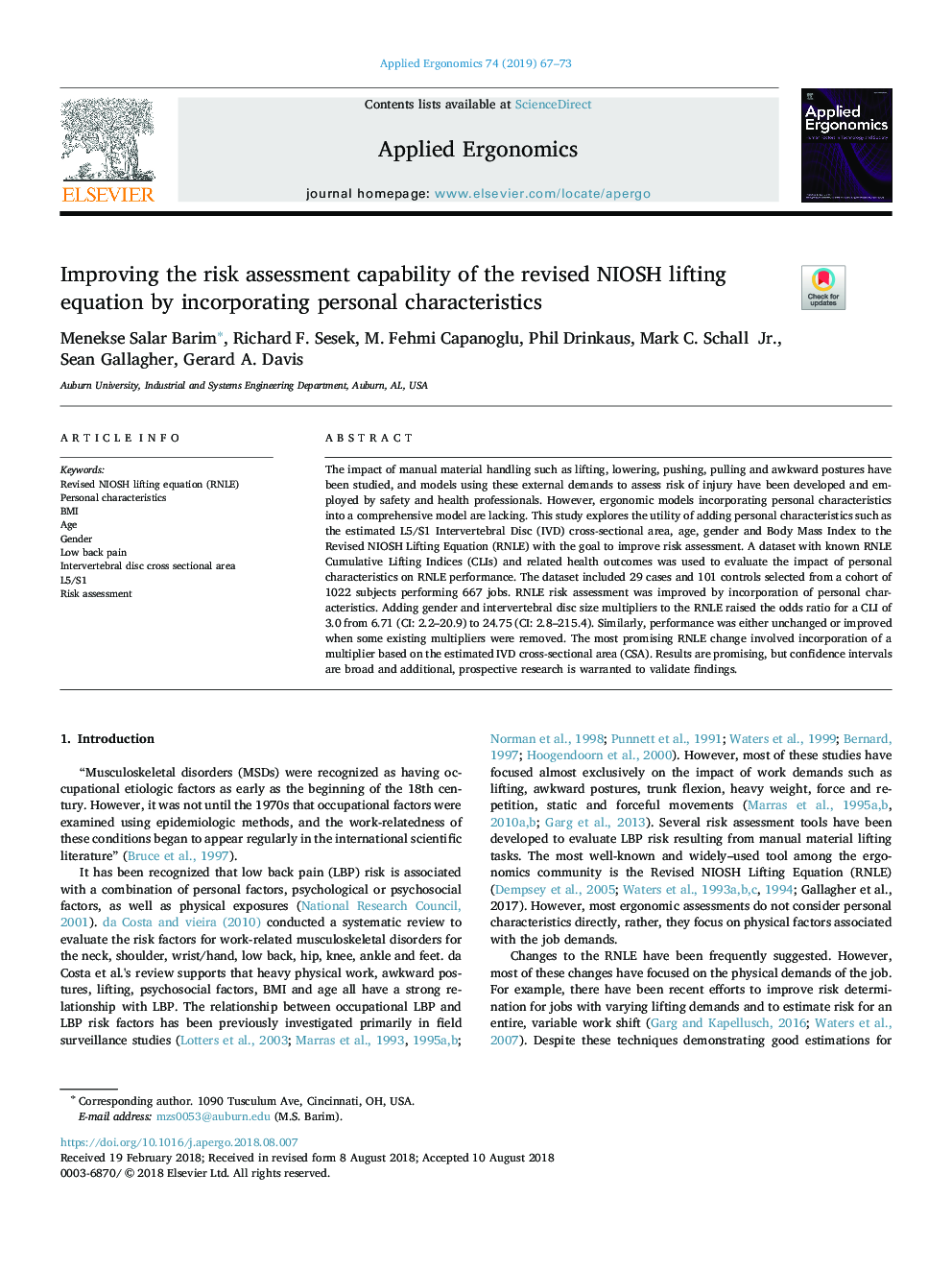| Article ID | Journal | Published Year | Pages | File Type |
|---|---|---|---|---|
| 6947536 | Applied Ergonomics | 2019 | 7 Pages |
Abstract
The impact of manual material handling such as lifting, lowering, pushing, pulling and awkward postures have been studied, and models using these external demands to assess risk of injury have been developed and employed by safety and health professionals. However, ergonomic models incorporating personal characteristics into a comprehensive model are lacking. This study explores the utility of adding personal characteristics such as the estimated L5/S1 Intervertebral Disc (IVD) cross-sectional area, age, gender and Body Mass Index to the Revised NIOSH Lifting Equation (RNLE) with the goal to improve risk assessment. A dataset with known RNLE Cumulative Lifting Indices (CLIs) and related health outcomes was used to evaluate the impact of personal characteristics on RNLE performance. The dataset included 29 cases and 101 controls selected from a cohort of 1022 subjects performing 667 jobs. RNLE risk assessment was improved by incorporation of personal characteristics. Adding gender and intervertebral disc size multipliers to the RNLE raised the odds ratio for a CLI of 3.0 from 6.71 (CI: 2.2-20.9) to 24.75 (CI: 2.8-215.4). Similarly, performance was either unchanged or improved when some existing multipliers were removed. The most promising RNLE change involved incorporation of a multiplier based on the estimated IVD cross-sectional area (CSA). Results are promising, but confidence intervals are broad and additional, prospective research is warranted to validate findings.
Related Topics
Physical Sciences and Engineering
Computer Science
Human-Computer Interaction
Authors
Menekse Salar Barim, Richard F. Sesek, M. Fehmi Capanoglu, Phil Drinkaus, Mark C. Jr., Sean Gallagher, Gerard A. Davis,
